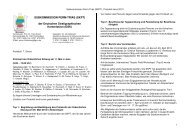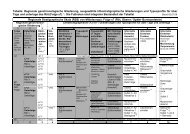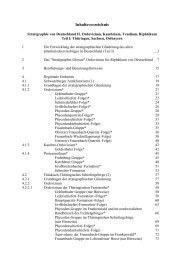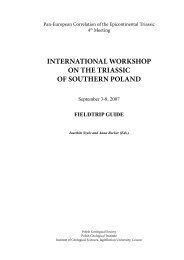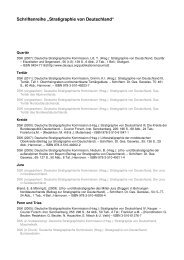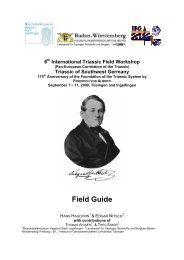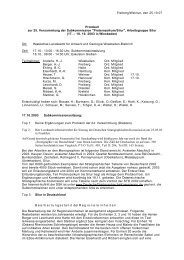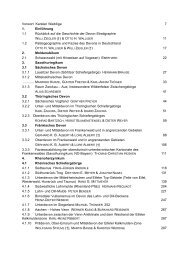International Field Workshop on 'The Triassic of eastern France'
International Field Workshop on 'The Triassic of eastern France'
International Field Workshop on 'The Triassic of eastern France'
You also want an ePaper? Increase the reach of your titles
YUMPU automatically turns print PDFs into web optimized ePapers that Google loves.
Stop 4.4 - Bitche (Citadel): Middle Buntsandstein (Karlstal facies <strong>of</strong> the ‘Grès<br />
vosgien’ Fm)<br />
In this outcrop (Fig. 44), the Karlstal facies <strong>of</strong> the ‘Grès vosgien’ Formati<strong>on</strong> are well exposed (Fig.<br />
47). These facies are characterized by fluvial and aeolian deposits.<br />
Figure 47: Outcrops <strong>of</strong> Bitche Cidatel.<br />
Facies associati<strong>on</strong>: Fluvio-aeolian overbank envir<strong>on</strong>ments<br />
This facies associati<strong>on</strong> is observed in the upper ‘Grès vosgiens’ Formati<strong>on</strong>, so-called the Karlstal<br />
Formati<strong>on</strong> (Fig. II.3, II.4). This associati<strong>on</strong> is very sandy and characterized by vertical pattern, from the base<br />
to top (defined <strong>on</strong> the cores <strong>of</strong> the Soultz-sous-Forêts well):<br />
- planar laminated sands c<strong>on</strong>taining cm-thick coarse sand layers,<br />
- cm-thick planar laminati<strong>on</strong>s <strong>of</strong> fine to medium sand, that sometimes grade upward into<br />
oscillatory ripples<br />
- laminated silst<strong>on</strong>es, or fine sandst<strong>on</strong>es, al<strong>on</strong>g with red mudst<strong>on</strong>es, sometimes bioturbated.<br />
These facies can be more or less bioturbated. They form fining-upward sequences ranging in thickness<br />
from dm up to 5 m, with frequent mud-crack structures at their top. Locally, aeolian facies can be<br />
interbedded within these deposits. The first facies, interpreted as fluvial sheet flood deposit evolves vertically<br />
into wave-ripple facies that suggest flood currents entering a subaqueous envir<strong>on</strong>ment, a hypothesis<br />
73



